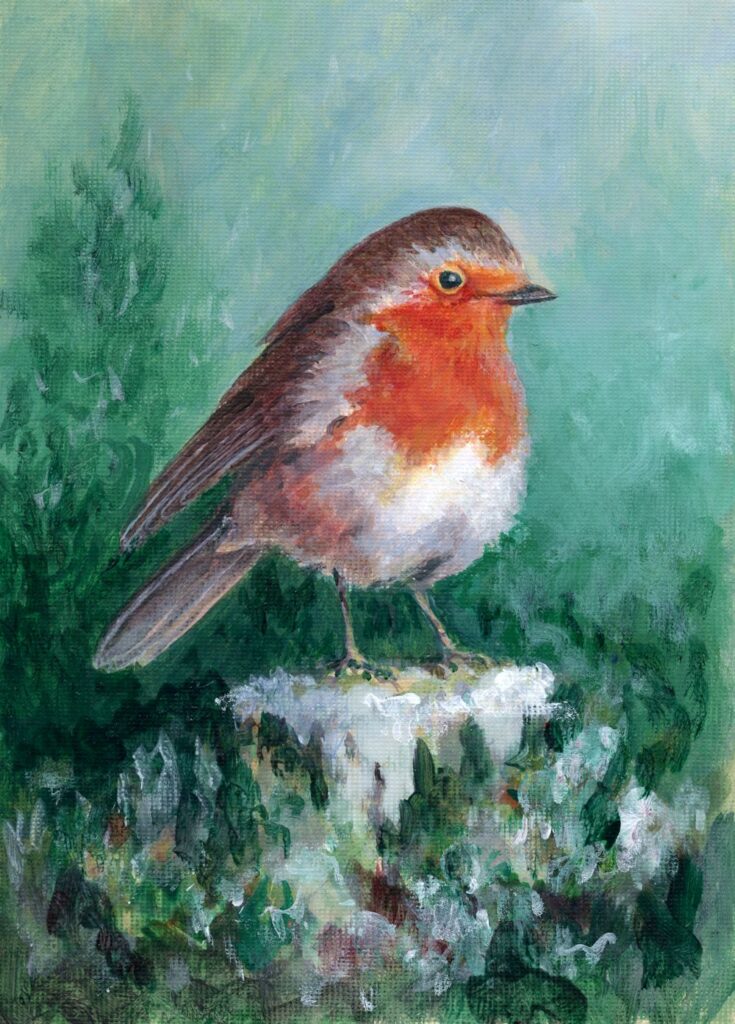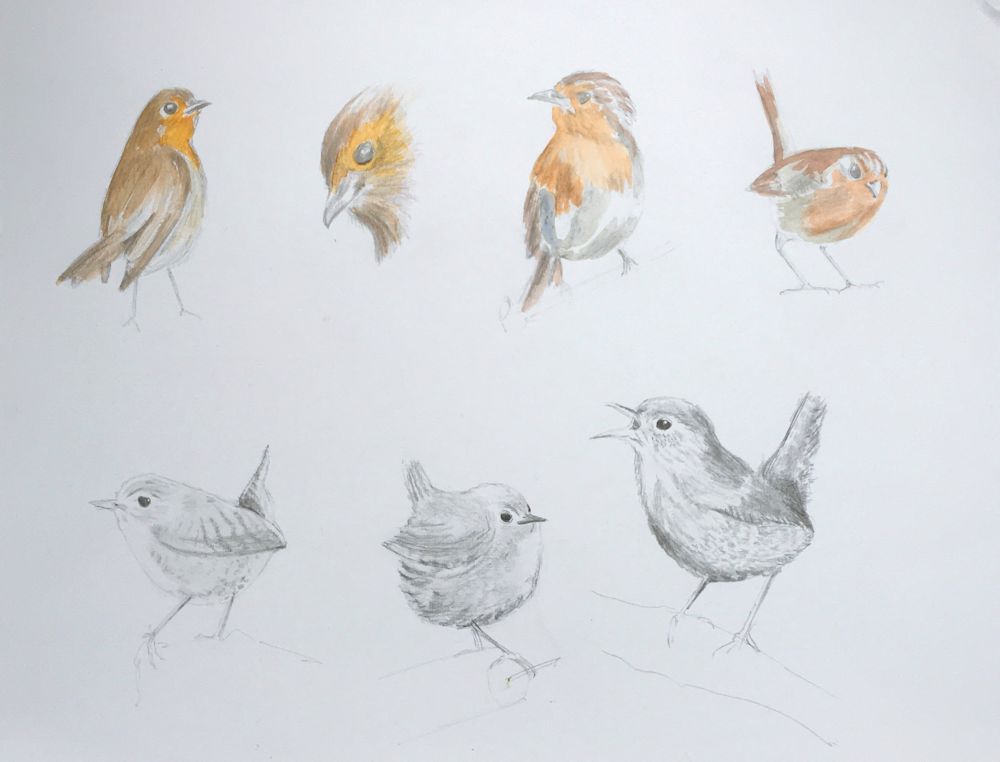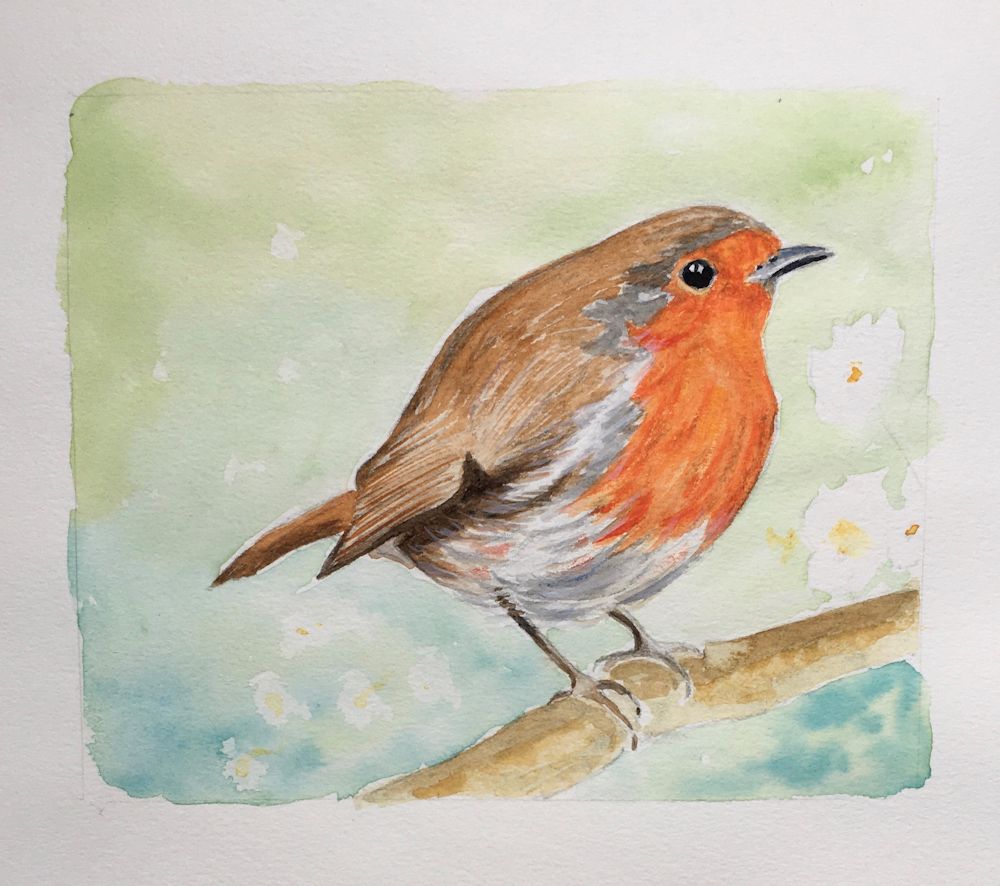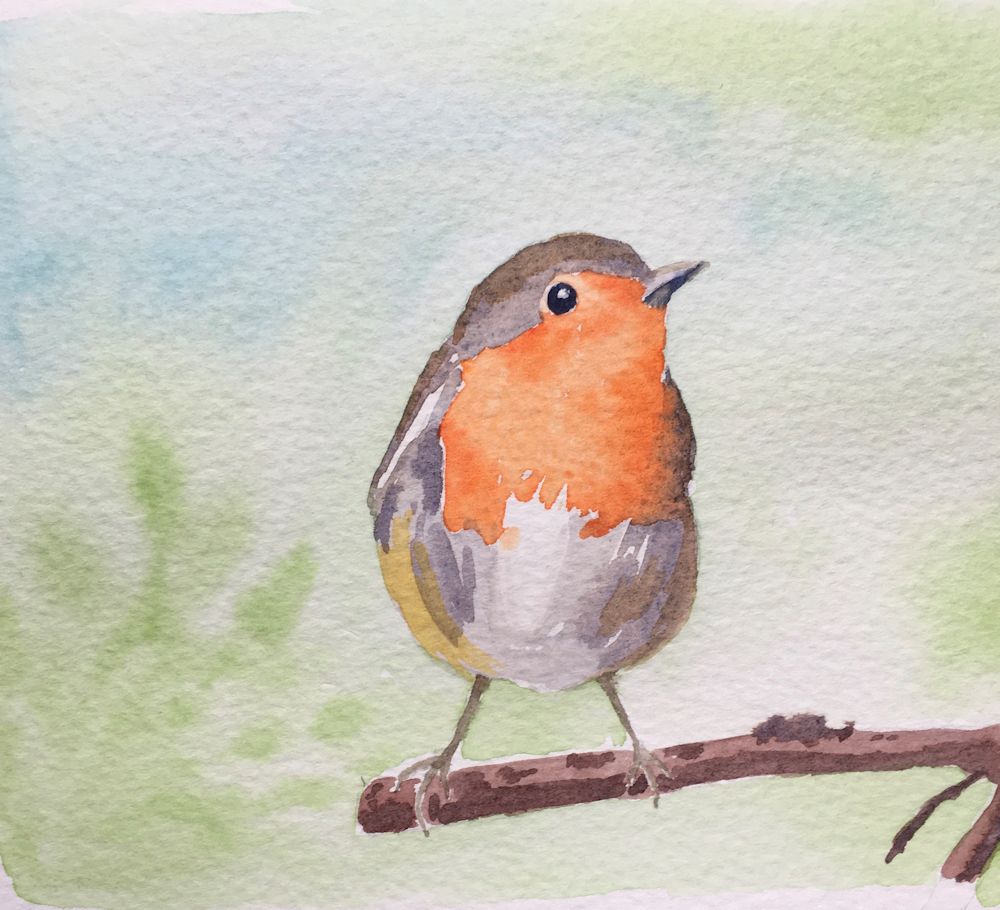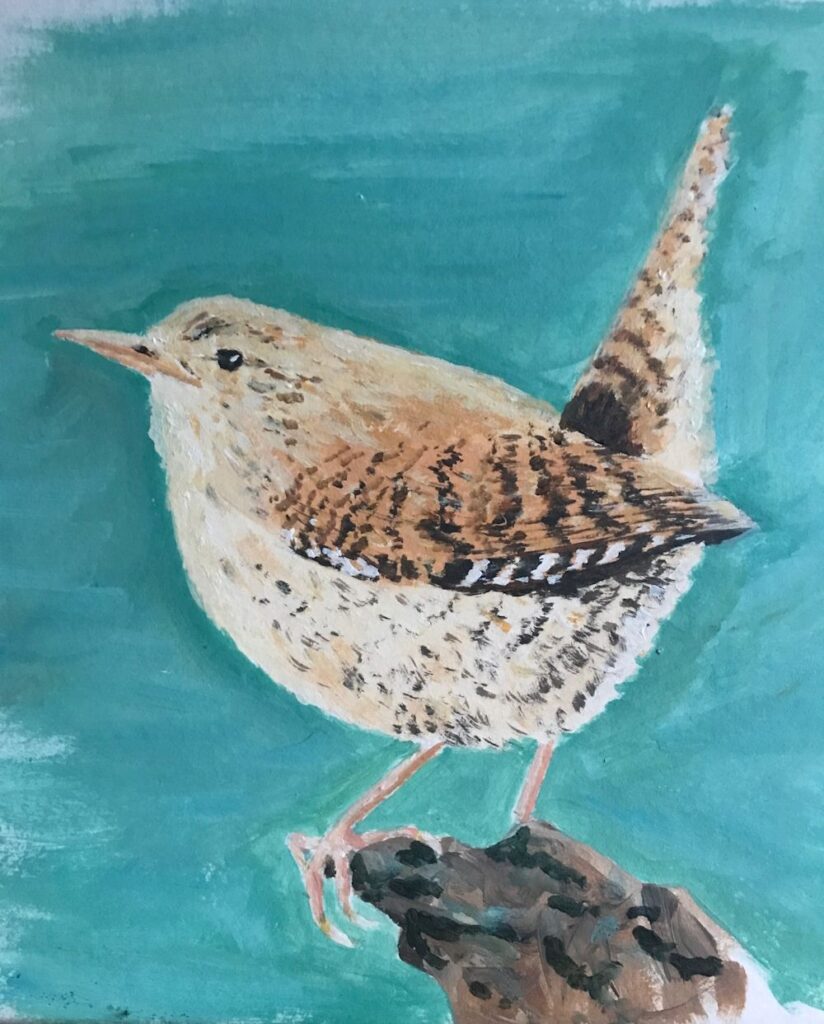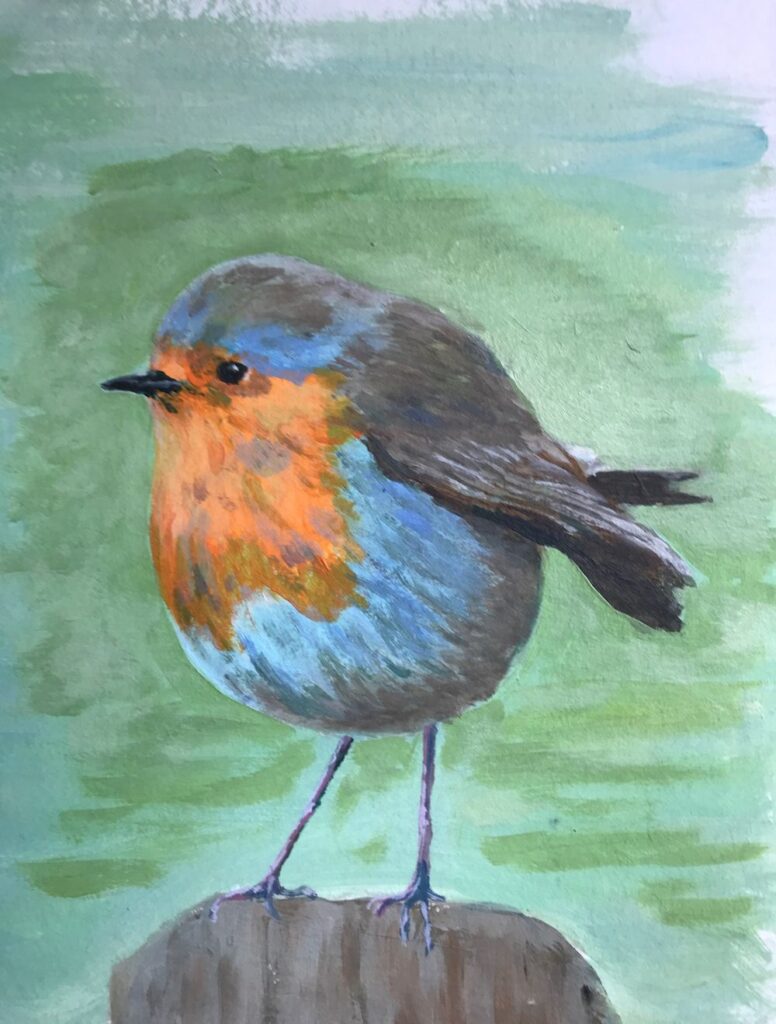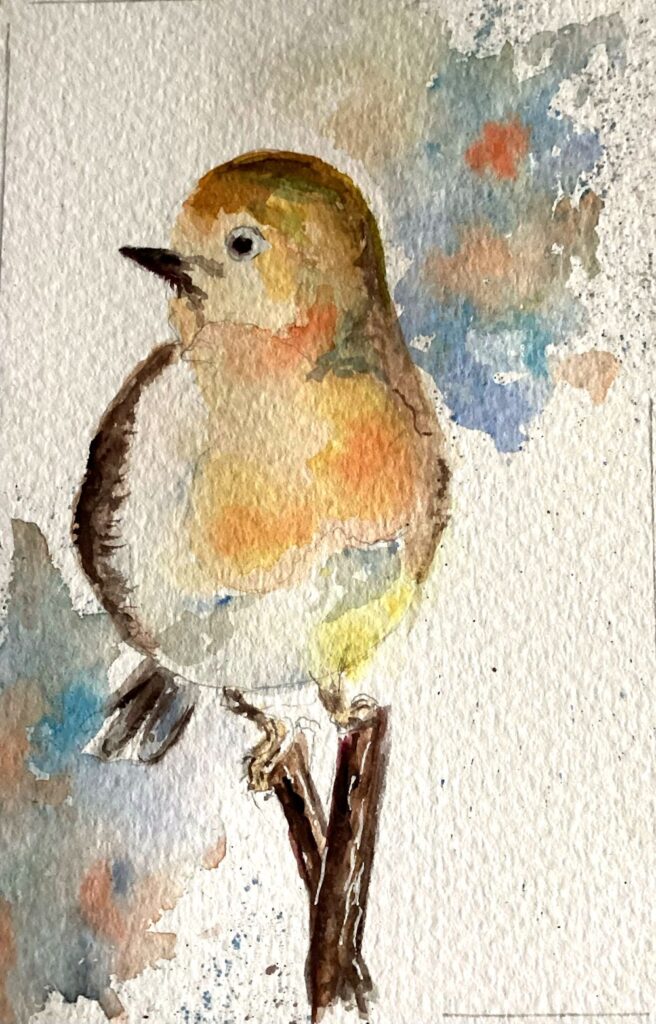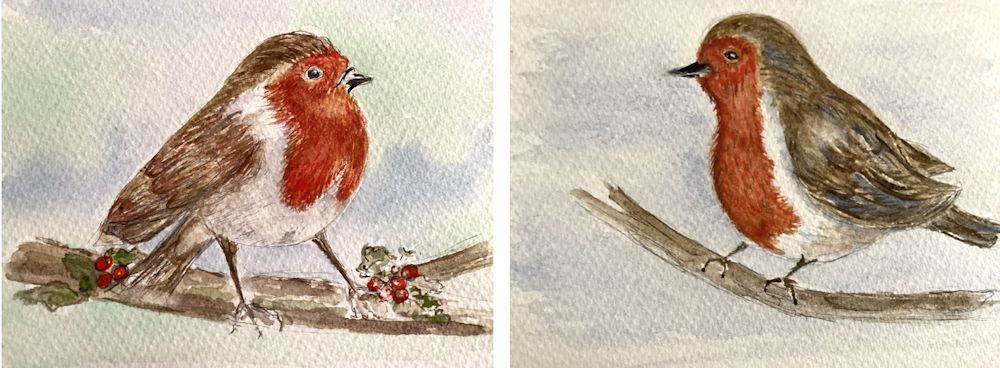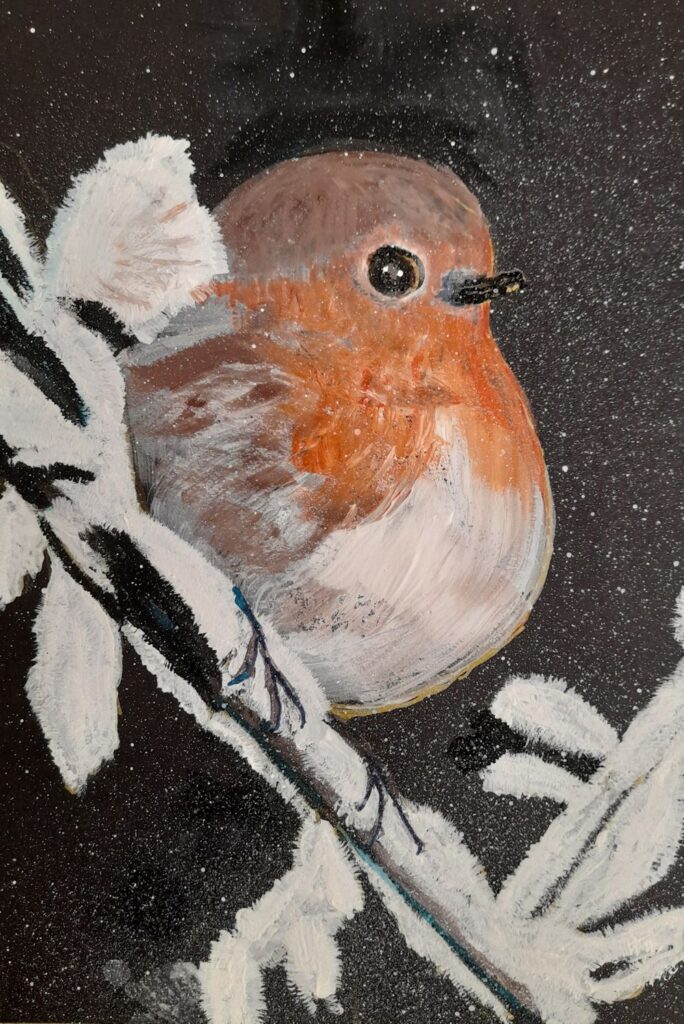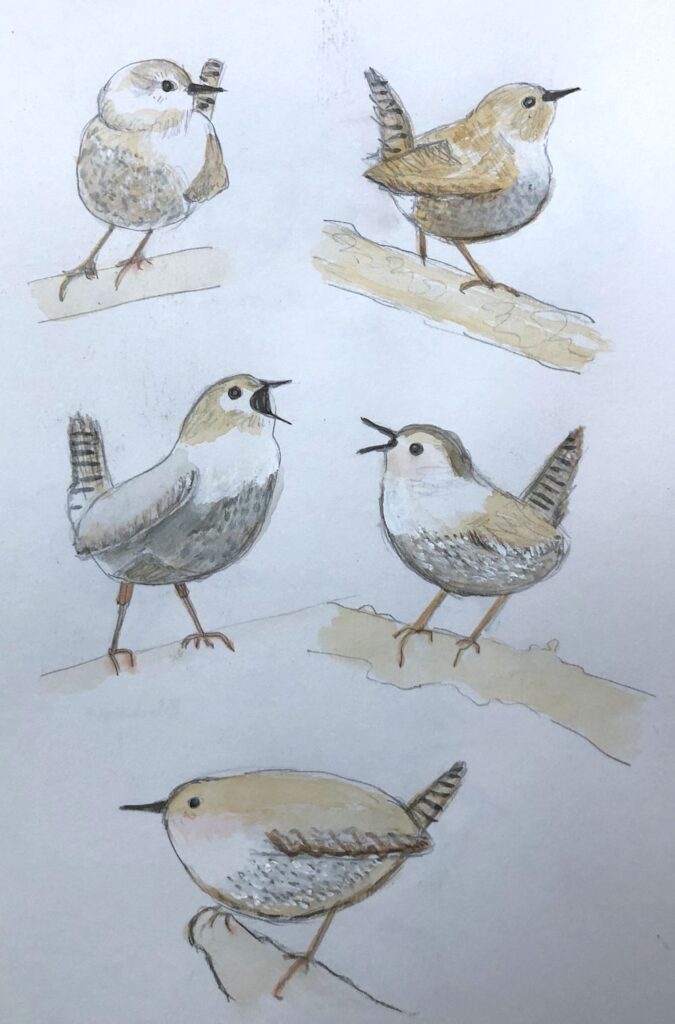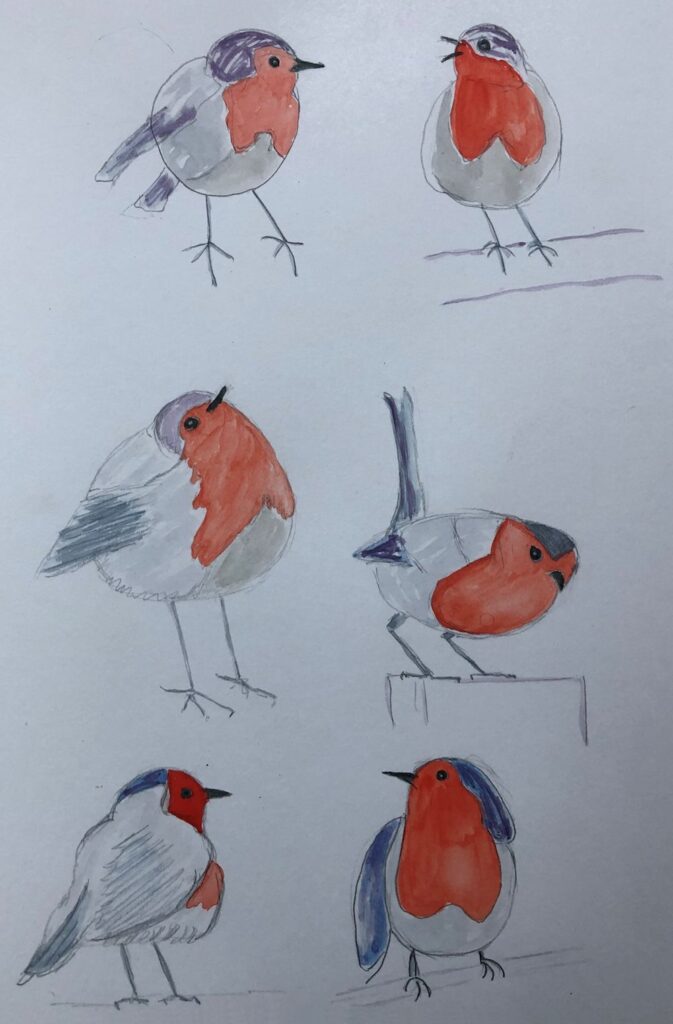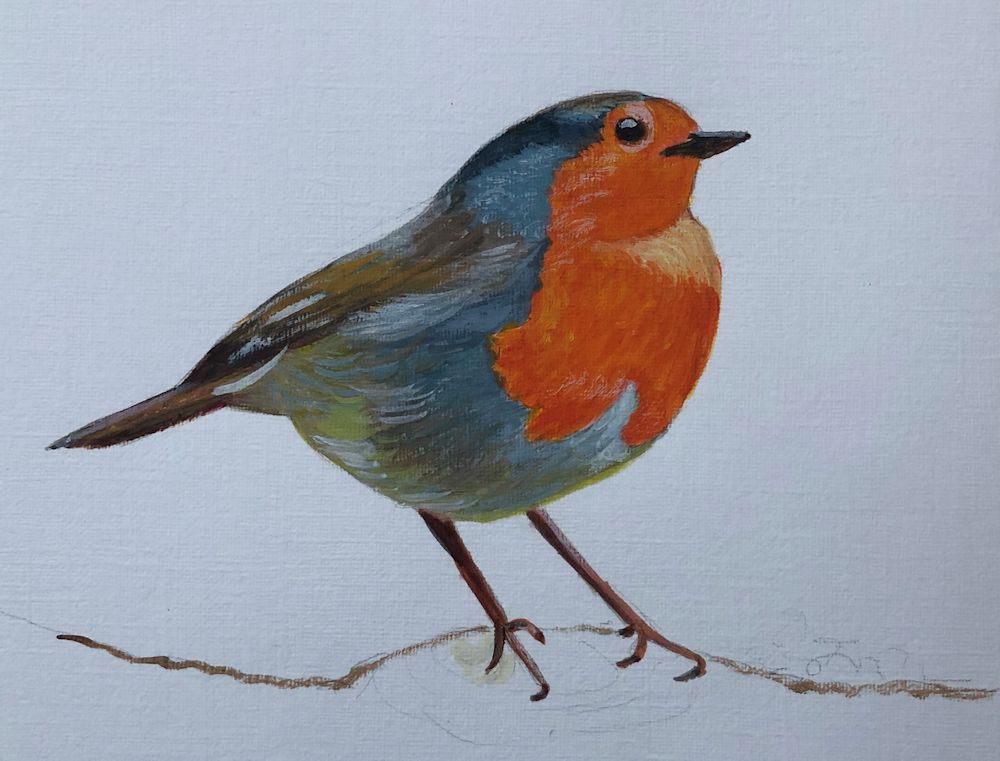Birds in the Garden: Week 1
November 2, 2022
This first week we’ll start by sketching a few bird shapes. Some like the Wren and Blue Tit are rather round and compact whereas the Song Thrush and Blackbird have a rather longer more elegant shape. I love the way a blackbird can turn its head. If you can, take time to watch the birds in your garden. With the cooler weather we often have several Blackbirds pecking away at the last of the apples on the ground. If you are quick enough you can doodle a gestural line or two in a sketchbook while you watch them. With practice you will soon be able to draw their body shapes turning and twisting among the fruit.
It’s easier of course to draw from photos, but if you work fast from birds in very different poses by direct observation or from photos you will learn how to make your drawing appear lively and not laboured. With fast sketches we can record the direction of movement rather than detail, the body shape as the bird moves, and the balance it achieves whether perching on a branch or hopping around on the ground. This is the skill required to include birds in paintings of gardens where several birds may make a huge presence but only occupy a tiny area of the composition.
At the other end of the scale, and this is where photo-reference can be invaluable, the artist may wish to make a detailed portrait of an individual bird or a field sketch noting all the characteristic markings and colour of a particular species. Some examples of these can be seen on the Pinterest Board, link below:
https://www.pinterest.co.uk/jhall1282/birds-in-art-and-photos/small-garden-birds-representational/
In either case observing birds in your garden and how they move will feed into and inform more detailed studies. Garden birds also feature in art in a more narrative and fictional way and some of these paintings and illustrations are shown on the following Pinterest Board, link below
https://www.pinterest.co.uk/jhall1282/birds-in-art-and-photos/birds-with-a-strong-narrative-element/
Observation points; you may not be able to observe all of these in any one view.
First look at the following Wren and Robin boards:
https://www.pinterest.co.uk/jhall1282/birds-in-art-and-photos/wren-photos/
https://www.pinterest.co.uk/jhall1282/birds-in-art-and-photos/robin-photos/
Pay attention to; overall body shape; head and beak; relation of head to body; how upright they stand; see what happens when they turn their head, sing or put their head down; wings and tail shapes and relation to the rest of the body; leg length and how they join the body; feet and their appearance when perching on a branch or on a flat surface; feathers; markings and colour.
Practical
1. Fast Sketches
This week we’ll choose to work from a couple of very small birds, the Robin and the Wren. First of all I’ll share the screen for some rapid sketches of each bird so have a sketchbook and pencil at the ready to draw several birds on the same page.
2. More detailed Studies
Before the session, find a reference to paint a more detailed study of a Robin or Wren. If you can, start two small paintings during the session and complete them afterwards sending images to me before the following week. In the first painting draw/paint exactly what you see in your reference. In the second study try painting the bird in a different position and change the background using the experience gained from the rapid sketches made earlier.
For sketches use any drawing medium with which you can work swiftly; for me at a small scale that would be rather conventionally a pencil! For more detailed studies in colour you may choose any coloured pencil including pastel pencil, which works well with coloured papers, or any painting medium. The Robin heading this post was painted in acrylic but watercolour or gouache would be a favourite for field studies.
Your Paintings:
